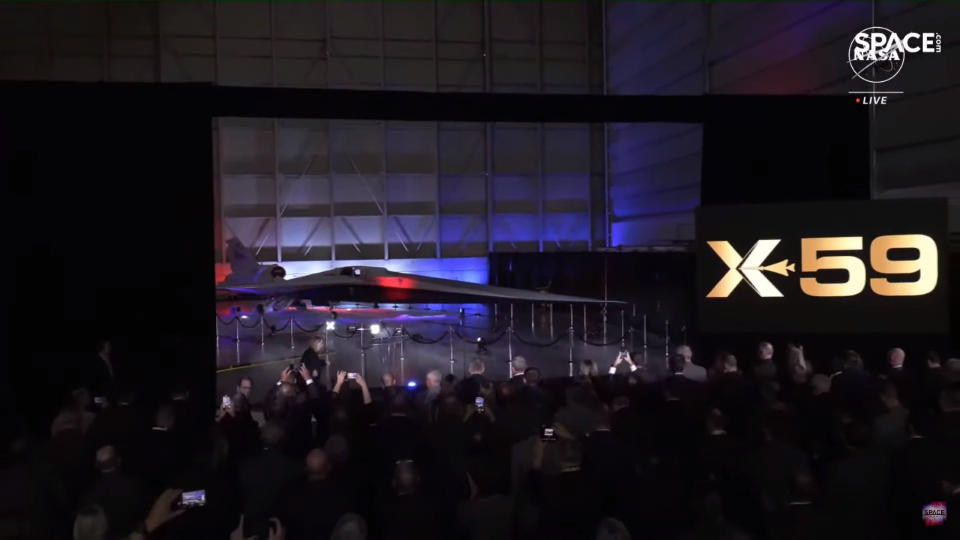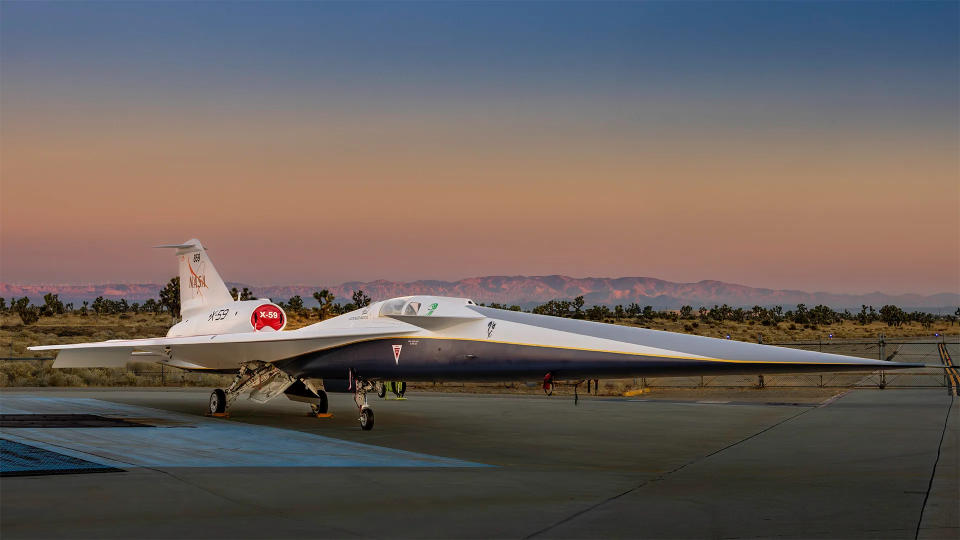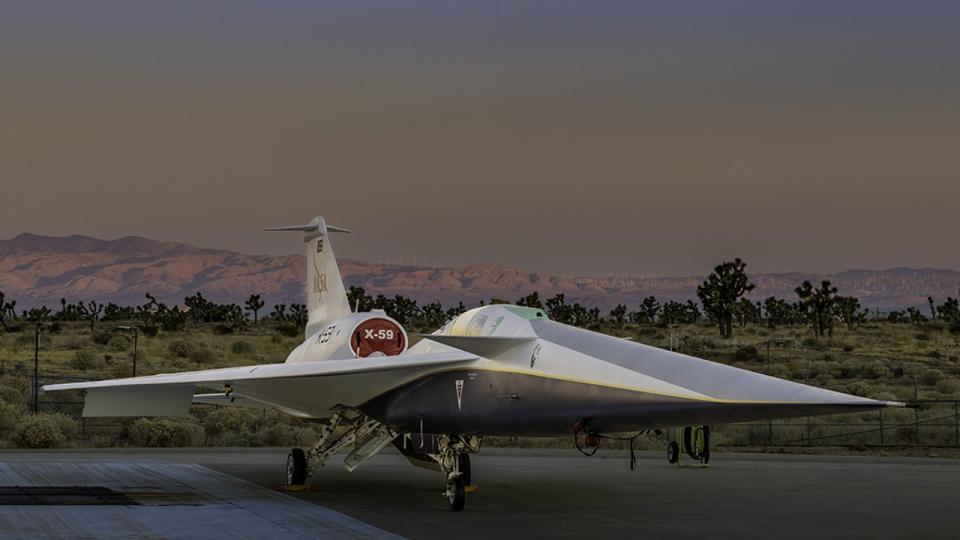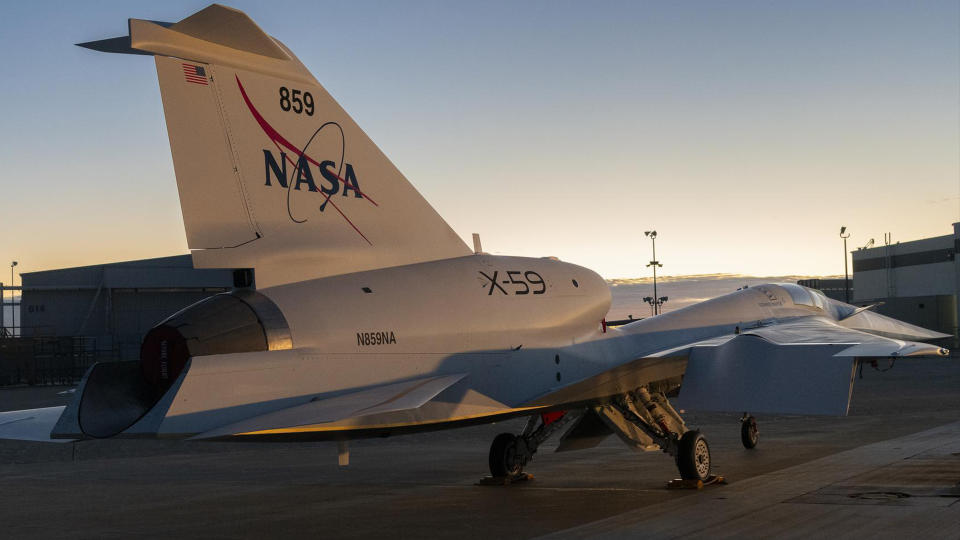The X-59 is finally here.
As NASA’s newest X-plane, the X-59 is designed to break the sound barrier without the thunderous sonic booms that typically occur when planes go supersonic. Instead, the Quesst will make a much quieter “thump”, similar to the sound of a car door slamming, as heard from inside. If successful, the jet aircraft has the potential to revolutionize supersonic flight and aviation in general.
After years of development, NASA and Lockheed Martin today (Jan. 12) showed off the completed X-59 Quest (“Quiet SuperSonic Technology”) to a crowd of nearly 150 people at the legendary Lockheed Martin Skunk Works facility in Palmdale, California. , a research and development site generally known for its secrecy.
In photos: Amazing X-Planes from the X-1 to XV-15

“It is rare that we have the opportunity to host so many visitors at the Skunk Works, and it is even rarer that we have been able to publicly unveil one of our aircraft,” said John Clark, vice president and general manager of Lockheed Martin Skunk Works. .
When the curtain finally fell to reveal the The elongated, beak-like nose section of the plane was striking, showing that it does not have a forward-facing window.
“This is a moment that future generations will look back on with awe and admiration,” said Greg Ulmer, Lockheed Martin vice president of aviation. “The Skunk Works mantra of fast, quiet and quality takes on a whole new meaning as we usher in the hope of a new era of silent supersonic travel, made possible through our partnership with NASA.”
In photos: Chuck Yeager: first person to break the sound barrier


During the unveiling ceremony, NASA Deputy Administrator Pam Melroy highlighted the agency’s long history of pioneering groundbreaking aerospace developments.
“The first A at NASA stands for aviation. And we are all about breakthrough innovation in aerospace,” said Melroy. “The X-59 proudly continues this legacy and represents the forefront of technology advancing aviation.”
NASA’s latest
“This isn’t just any airplane, this is an X-plane,” Melroy added. “It is the manifestation of a collaborative genius.”


But Melroy admitted she initially had some doubts about the revolutionary plane. “As a test pilot, the first time I looked at the design I thought ‘hmm’, I really had some questions about that.”
In particular, Melroy referred to the fact that the X-59 does not have a forward-facing window, a design choice that helps reduce the sonic boom the aircraft produces. Instead, it features what NASA calls the eXternal Vision System, or XVS, which consists of a camera and a cockpit-mounted display that provides pilots with an augmented reality view of what’s in front of the plane.
Melroy said this system has the potential to revolutionize aircraft design.
“We didn’t feel comfortable retrofitting a manned aircraft without testing it first, so this breakthrough technology is truly a beacon leading us into a future where visibility barriers in aircraft design can be overcome with this inventive solution.”


NASA leadership used the revelation to underscore the role that both the agency and the Southern California region have played in America’s rich history of pushing boundaries in aviation. “This journey actually began in 1947, when the era of supersonic flight began here in the California high desert with test pilot Chuck Yeager and the X-1,” said Robert Pearce, Associate Administrator of NASA’s Aeronautics Research Mission Directorate at the agency.
NASA Associate Administrator Jim Free continued this sentiment, noting that the X-59 is just the latest in a long line of NASA X-planes that have revolutionized aviation in the agency’s history.
“Even among other X-planes, the “These special aircraft push the boundaries of what is possible in flight. And once they prove those concepts, they often go to museums. And that’s really what makes the X-59 different.”
RELATED STORIES:
— DARPA’s wildcat X-65 CRANE plane aims for first flight in summer 2025
– NASA and the US Air Force unveil a new X-plane – the X-66A – to test the wild wing design for economical flight
— Photos: Great X-Planes from X-1 to XV-15
Free was referring to the fact that once the boom it creates.
NASA will then use that data to seek approval for commercial supersonic flights from regulatory agencies such as the Federal Aviation Administration, with the ultimate goal of making aviation more sustainable and enabling faster flights over populated areas.
“The
Some of the applications of supersonic flight mentioned at today’s unveiling include rapid medical response, faster dispatch times and, of course, faster travel.
NASA and Lockheed Martin aren’t the only ones pursuing commercial flights at speeds above the sound barrier. Colorado-based Boom Supersonic is developing a commercial supersonic passenger plane, the XB-1, that the company hopes to have in the air on its maiden flight in 2027.